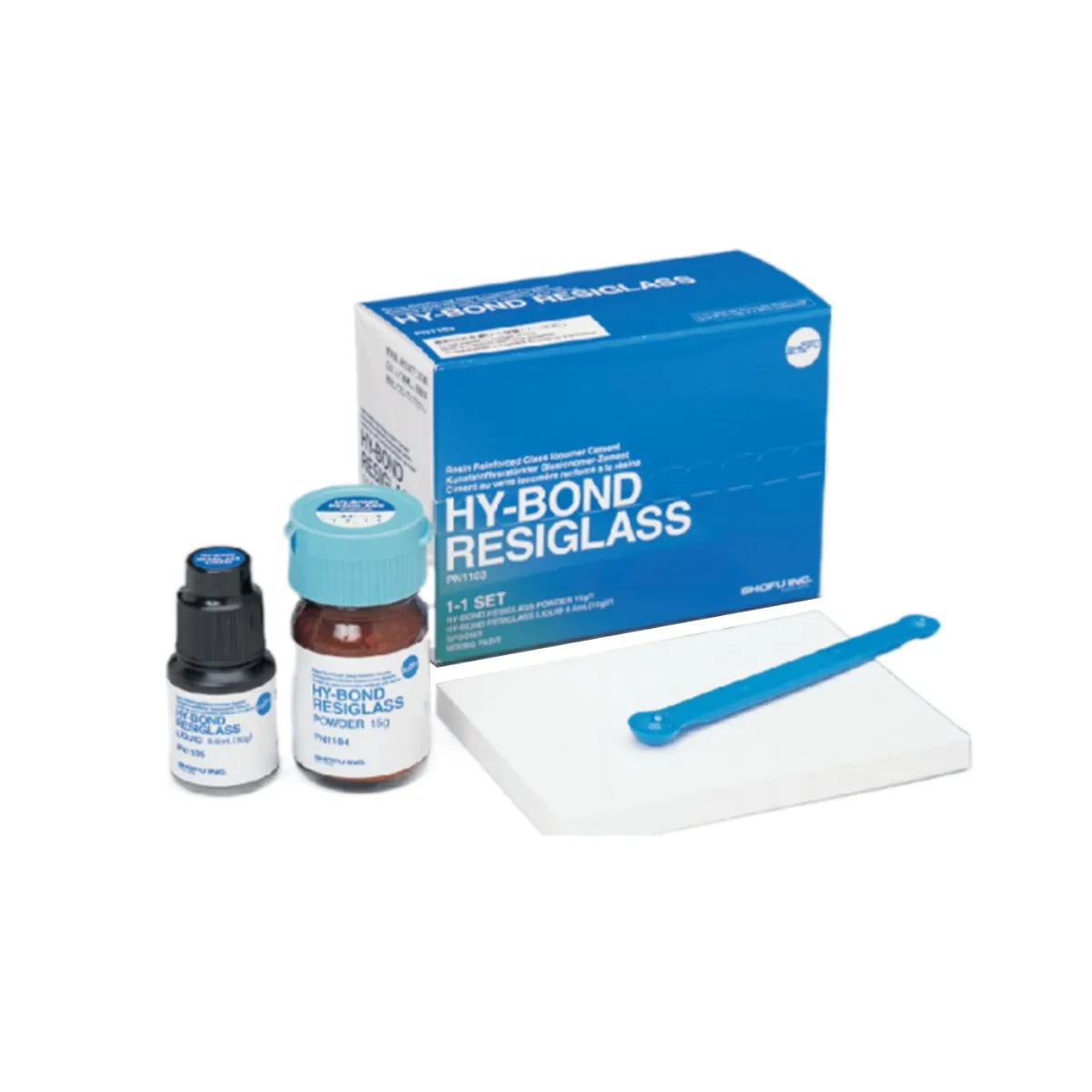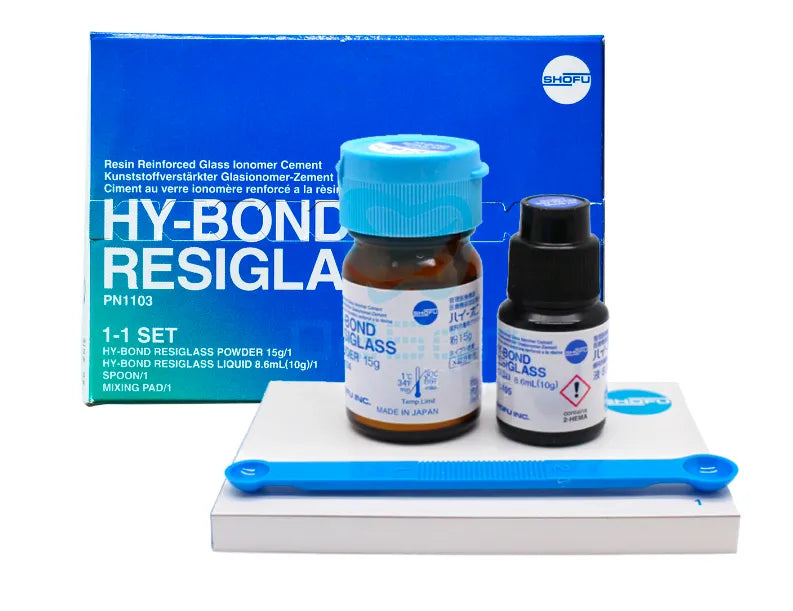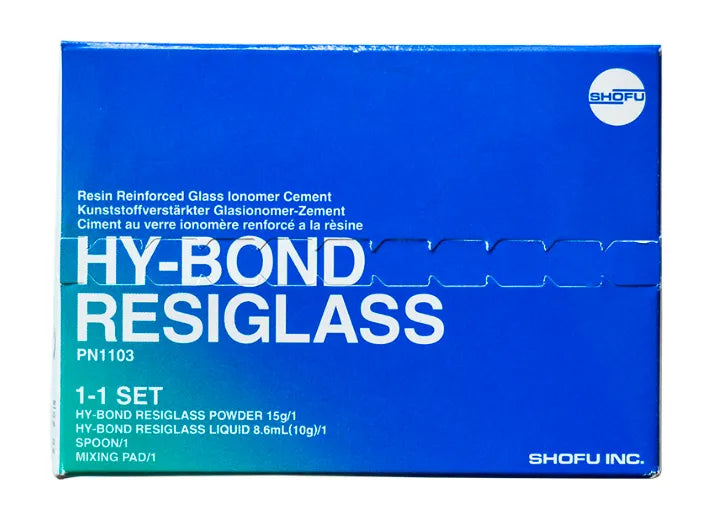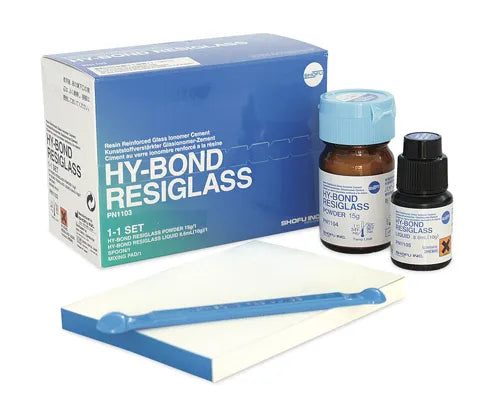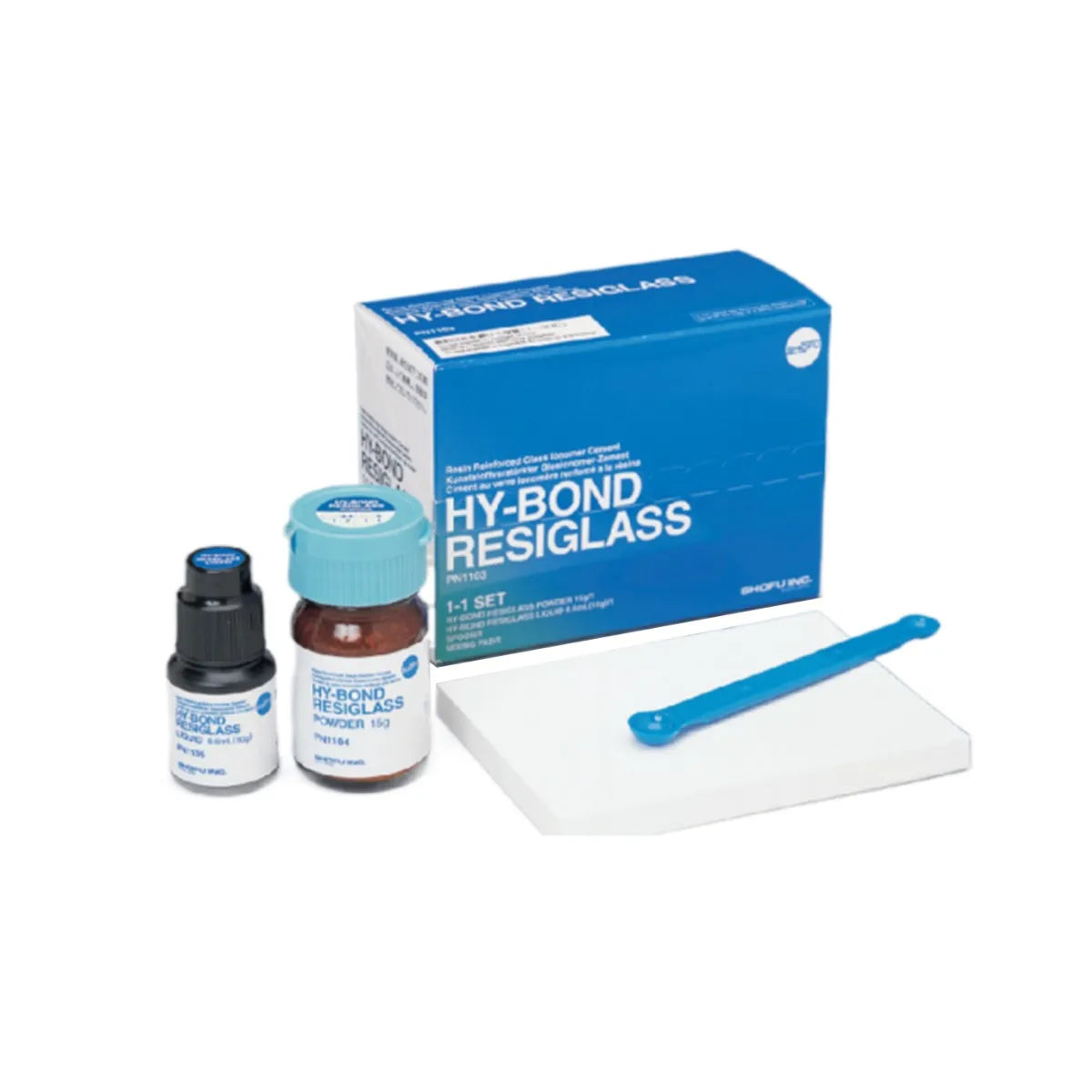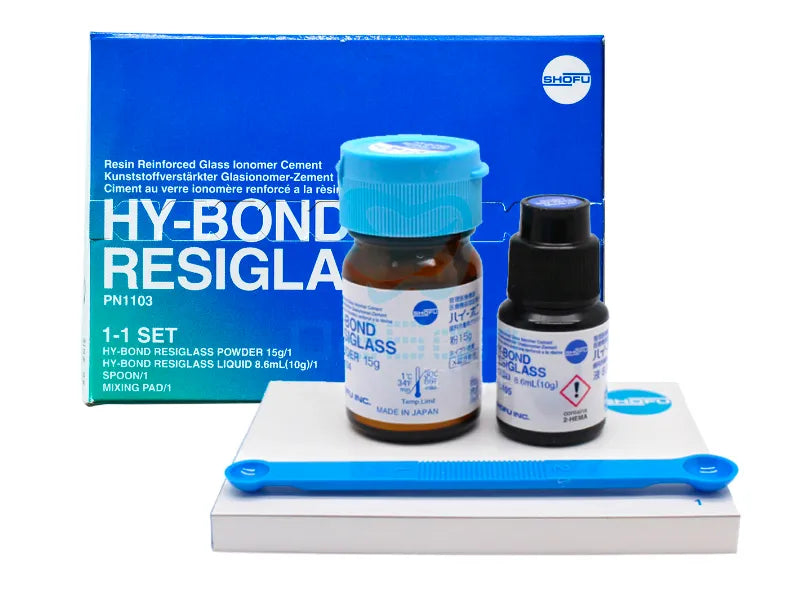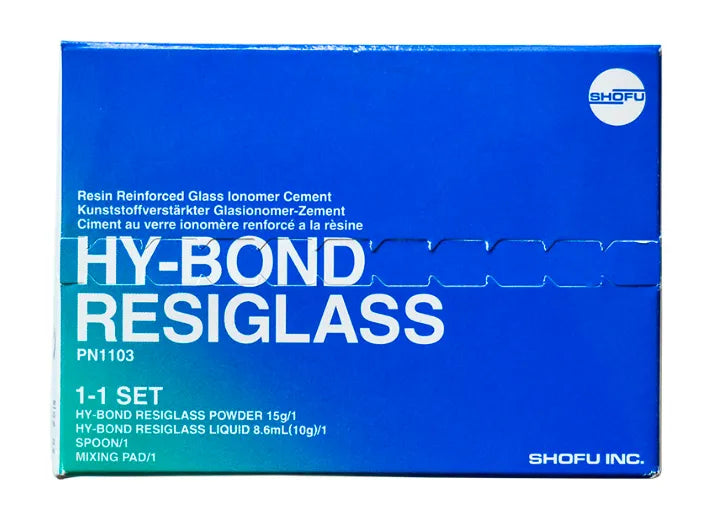SHOFU
Shofu Hy-Bond Resiglass
Shofu Hy-Bond Resiglass
Exclusive of GST
Couldn't load pickup availability
Shofu Hy-Bond Resiglass is a newly formulated radiopaque, resin-modified glass ionomer (RMGI) cement for luting metal-ceramic, full metal and metal-free crowns, bridges, inlays and onlays as well as orthodontic bracket.
INDICATION:
- Cementation of metal based inlays,crowns & bridges
- Cementation of resin based inlays,crowns & bridges
- Cementation of ceramic (pocelain) based inlays,crowns & bridges
- Cementation of orthodontic (metal or ceramic) brackets and band
Features
Features
- Chemically bonds to tooth structure to ensure higher bonding strength
- Fluoride release & biocompatible.
- Low film thickness of just 12μ
- Minimum odour and virtually no post-operative sensitivity
- Improved fracture toughness and low solubility for intra-oral durability of the restoration.
- Provides an excellent marginal seal and prevents microleakage.
- Exhibits high translucency for aesthetic cases.
- Long working time with a net setting time of 4 minutes.
- Change of colour from a light pink to colourless upon setting, for ease of identification and application.
- Easy to manipulate and remove excess cement.
Description
Description
Specification
Specification
COMPOSITION:-
POWDER:
- Fluoroaluminosilicate glass
- Additives
- Pigments
LIQUID:
- Polyacrylic acid
- Purified water
- 2- HEMA
- Mixing time - 20sec
- working time - 3min 30 sec
- setting time - 7 min
STORAGE
- Store at room temperature: 1-30 degree Celsius/34-86 F
- Avoid high temperature and high humidity
Packaging
Packaging
- 1 x 15gm Powder
- 1 x 8.6ml Liquid
- 1 x Mixing Pad
- 1 x Scoop
Direction to use
Direction to use
STEP 1- Remove temporary material - Thoroughly remove the temporary filling materials. Rinse with water and dry.
STEP 2- Pulp capping - In cases where the cavity is deep, application of calcium hydroxide
STEP 3- Prepare the restoration - Clean the area to be cemented.
STEP 4- Dispense the powder/liquid in standard ratio- 1.6g/1g
STEP5- Mix the prescribed powder liquid ratio on the mixing pad using plastic spatula for 20seconds, working time - 3min 30 sec, setting time - 7 min
STEP 6- Remove excess cement using an instrument- when the excess material exhibit rubbery elasticity ( 2min30sec- 3min30 sec) remove it with the instrument.
Additional info
Additional info
- Country Of Origin: Japan
- Manufacturer: Shofu inc.
Warranty
Warranty
Product Related Questions
Product Related Questions
Question: Can Shofu Hy-Bond Resiglass be used for the cementation of orthodontic (metal or ceramic) brackets and bands?
Answer: Yes, Shofu Hy-Bond Resiglass is effective for the cementation of both metal and ceramic orthodontic brackets and bands. Its strong adhesive properties provide reliable bonding, making it a suitable choice for orthodontic applications.
Question: Can it be used to cement orthodontic braces?
Answer: Yes, Shofu Hy-Bond Resiglass can be used for cementing orthodontic braces. It is suitable for the cementation of both metal and ceramic brackets, as well as orthodontic bands, providing a strong and reliable bond for effective orthodontic treatment.
Question: Do we need to apply bonding agent and light curing for cementing zirconia crown?
Answer: No, for cementing a zirconia crown using Shofu Hy-Bond Resiglass, the application process does not require the use of a bonding agent or light curing. Similar to other glass ionomer cements (GICs), the application method involves following standard procedures for GIC.
Question: Shofu hy bond resin vs shofu cx smart luting difference,strength & protocols?
Answer: Shofu Hy-Bond Resiglass, classified as a Resin-Modified Glass Ionomer (RMGI), exhibits a robust chemical bond, resin-modified composition, and incorporates HY-agent for enhanced properties, as supported by literature. This formulation minimizes post-operative sensitivity. Conversely, Shofu CX-Smart Luting, a Glass Ionomer Cement (GIC), emphasizes high bonding strength and biocompatibility. The systematic literature review underscores the advantages of RMGI over conventional GIC, including improved surface protection and reduced microleakage. The choice between these cements should align with the specific clinical requirements, considering the nuanced strengths highlighted in both literature and product information. For detailed usage protocols, please refer to the "Directions for Use" section provided by Oralkart.
Question: Is this good for Zirconia crown & E max?
Answer: Yes, Shofu Hy-Bond Resiglass is suitable for use with Zirconia crowns and E-max restorations. This adhesive system provides reliable bonding, ensuring a strong and durable connection between the restoration and the tooth structure.
Question: Is this luting agent ok to be used on Vital sensitive teeth for crowns or bridges?
Answer: The use of Shofu Hy-Bond Resiglass on vital, sensitive teeth for crowns or bridges should be approached with caution. It is generally recommended to avoid using resin-modified glass ionomer cements, like Resiglass, on sensitive dentin due to potential postoperative sensitivity. When dealing with hypersensitive teeth for crown or bridge applications, it's important to consider materials known for their compatibility with vital dentin. Zinc polycarboxylate and reinforced zinc oxide eugenol are often preferred for their mild and biocompatible nature, making them suitable choices for individuals with sensitive teeth.
Question: What is the difference between resin-modified glass ionomer (RMGI) cement and traditional glass ionomer cement (GIC)?
Answer: RMGI cements are essentially GICs that have been modified with a resin component. This resin component improves the strength, adhesion, and handling characteristics of the cement, making it more suitable for use in restorative dentistry.
Question: Is Hy-bond resiglass radiopaque?
Answer: Yes, Hy-bond resiglass is formulated to be radiopaque, making it visible on x-rays.
Question: What are the advantages of using Hy-bond resiglass over other types of dental cements?
Answer: The advantages of using Hy-bond resiglass include its superior strength and adhesion, excellent handling characteristics, and radiopacity.
Share

